CARTIF

Fundación CARTIF, created in 1994, is a leading Spanish RTD and innovation centre. It is formed up by almost 200 engineers, scientists and senior researchers. During previous years CARTIF has carried out over 100 projects with a turnover of approximately 11M€. CARTIF is part of 20 research and professional networks (including 13 international) and several technology platforms. Additionally, CARTIF is one of the founding members and main promoters of the Smart City VyP, carried out in the Spanish cities of Valladolid and Palencia. Its main research areas are: Automation and Process Control, Robotics and Computer Vision, Energy, Environment, Biomedical Engineering, Food and Chemicals. One of the major fields of work is the integration and development of prototypes and techniques transferable to industry, as they are devoted to offer customized practical solutions. CARTIF also keeps a close collaboration with the most representative organisations of regional and national industrial development, as well as the European Commission (DG Research, DG Enterprise, DG Environment and DG TREN). CARTIF, through the division of Robotics and Computer Vision, will bring 20 years of experience for this proposal. The knowledge gained in numerous applications allows facing projects using not only diverse commercial equipment (long and short range scanners; multispectral cameras; total stations; GPS; 3D edition and data processing programmes; CAD/CAM/BIM; reverse engineering) but also tailored tools developed for specific needs (both hardware and software) to provide innovative solutions mainly for the building sector (including heritage). Moreover, CARTIF is currently involved in 38 on-going international projects, including 6 projects from H2020 (2 coordinated) and 10 FP7 projects (4 coordinated) in addition to 8 on-going LIFE+ coordinated projects.
Main roles in INCEPTION
- T1.1, T 1.2, T 1.3: Active role in stakeholder analysis and definition, mapping and classification of user requirements.
- T 2.1, T 2.2: Supporting procedures for data capturing optimization, and detailed point clouds.
- T 2.3: Responsible as leader in testing and validation of photo-based 3D scanning technique on cultural heritage assets.
- T 2.4: Responsible as leader for managing the reflectivity index provided by laser scanning devices, based on a combination of state-of-the-art 3D data acquisition, with a tailored computational algorithm.
- WP3 T 3.1: Leader for obtaining the alpha version of the software that allows to use multilayer graphical and semantic heritage useful information into a BIM environment.
- T 3.2: Providing the input data collection methods for semantic organization and glossary definition for Cultural Heritage buildings.
- T3.3: Responsible for obtaining Heritage-BIM models from 3D point cloud data, comprising three issues: how to manage and extract useful information for heritage in a BIM environment from point clouds; developing a software tool for automatic 3D shape recognition; developing a software tool for blending photographic and thermal image.
- T4.1: Providing the input data collection and aiding to the development platform standards for Open BIM integration.
- T4.3: Providing the input data collection and aiding to the development of the semantic web ontology for a BIM-based platform.
- T 5.1, T 5.5: Being responsible as a leader in carrying out the test-beds in the Spanish demonstrator heritage site in order the tools and related effective methods to be validated.
- T 6.3: Providing technical advice for the deployment of 3D VR/AR off site models.
- T 7.1, T 7.3: Active participation in dissemination plan, publications in professional journals, workshops and presentation to professional associations; development of exploitation strategy.
- T 8.1, T 8.2, T 8.3: Active participation in management meetings (general assemblies), involvement in the scientific management, fulfilment of all obligations for reporting.
-
Key persons involved
PEDRO M. LERONES (male) - Dr., Senior ResearcherDr. Pedro M. Lerones obtained his Degree in Applied Physics in 1997, with further specialization in the design of optical systems for non-contact measurement and 3D imaging. He obtained his PhD in 2007, and worked as Associate Professor in the Technical Hi-School of Engineering - University of Valladolid (Spain) between 2002 and 2011, teaching about 3D digitization and modelling to CAD/CAM. Dr. Lerones is currently Senior Researcher at Fundación CARTIF. Author or co-author of 32 scientific papers and specialized studies (including impact publications), has been participating in 26 national and international RTD projects and commercial contracts mainly oriented to the application of digital technologies to Cultural Heritage and Construction. In addition, he is Evaluator of EU RTD proposals (Code: EX2006C113308); Reviewer for international journals; Core member of the European Focus Area of Cultural Heritage (FACH-ECTP); Member of the Spanish NCP for the JPI Cultural Heritage and Global Change; Collaborator of the initiative: Research for Future Infrastructure Networks in Europe (reFINE); and Founding member of the International Platform: Economic Value of Cultural Heritage (EVoCH). |  |
FERNANDO GAYUBO ROJO (male) - Dr., Senior ResearcherDr. Gayubo received the Ph.D. Degree in Control Engineering from the University of Valladolid (Spain) in 2009. He has been Associate Professor in the Technical School of Industrial Engineering (University of Valladolid) between 2001 and 2011. His research interests include applied machine vision, sensorization, robotics, industrial communications, artificial intelligence and real time processing. He has published 27 papers and specialized studies on these topics. He has been involved in over 50 funded international and Spanish RTD projects and commercial contracts (ACS, RENAULT, ABB…). He is particularly active in the area of smart and sustainable construction/infrastructures (including heritage). | 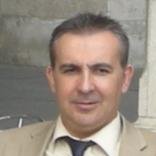 |
SAMUEL MARCOS PABLOS (male) - Dr., Senior ResearcherPh.D. Samuel Marcos Pablos, received a Telecommunication Engineer's Degree in 2006, a M.Eng in robotics in 2009, and a Ph.D in robotics in 2011 from the University of Valladolid (Spain). He has been working as a researcher at CARTIF's Robotics and Computer Vision Division since 2007, where he has combined theoretical and field work. He has wide experience in the research and development of projects in the area of Social and Service robotics and computer vision, where he has worked 3D animation, augmented reality and humancomputer interaction. He has authored, among others, papers for the journal Interacting With Computers, the IEEE International Conference on Intelligent Robots and Systems and the IEEE International Conference on Robotics and Automation. | 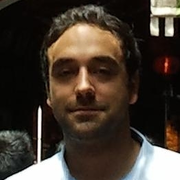 |
JOSE Mª. LLAMAS FERNÁNDEZ (male) - M. Eng, Senior ResearcherMr. Llamas is a researcher at Robotics and Computer Vision Division at CARTIF. He obtained the Industrial Engineer degree (in Electronics and Automatic Control) from the University of Valladolid (Spain), in 2001 and the MEng in Automatic Control and Systems in 2003. Working at CARTIF for over 10 years, he is an experienced Project Manager and RTD engineer, leading and participating in more than 25 projects focused on laser scanning and 3D imaging (especially on Heritage and Civil Works). He is co-author of several scientific & technical papers, and he has also been associate professor in the School of Industrial Engineering of the University of Valladolid for 8 years. |  |
DAVID OLMEDO VÉLEZ (male) - M. Eng, Senior ResearcherHe is Engineer at Computer Vision Division of CARTIF. He has extensive experience in the useful implementation of efficient methods for LIDAR/2D/3D massive data processing, including the treatment and extraction of geometric, colorimetric and reflectometric information, and their exportation and handling into graphical computer design and BIM applications. He also works in developing computer vision algorithms and spectroscopic analysis, as well as developing lighting systems for inspection and quality control of all kinds of pieces. | 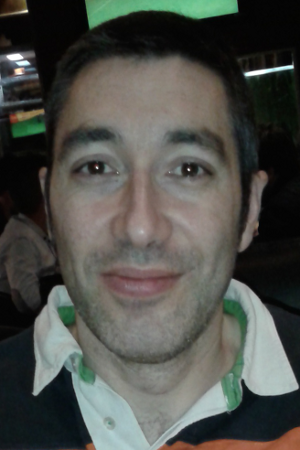 |
MIGUEL ANGEL GARCÍA FUENTES (male) - Architect, Junior ResearcherMr. García Fuentes received the Architect’s Degree in 2010 and the MSc. Arch. in 2012, both from the University of Valladolid (Spain). Currently he is working as researcher at the Energy Division of CARTIF since 2012, in European RTD Projects in the framework of Smart Cities and Nearly Zero Energy Cities. He is specialized in Building Energy Performance Simulation (BEPS) and Building Information Modelling (BIM), focusing the gap of data interoperability. At this moment he is developing his doctoral thesis about “Energy performance improvement in existing buildings and districts towards Nearly Zero Energy Cities”. He has contributed to different congresses of national and international relevance related to sustainability and energy efficiency in buildings.
| 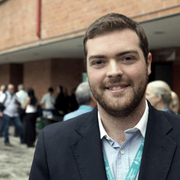 |
Given the close relationship between CARTIF and the University of Valladolid, the above key personnel will be additionally supported by the external advice from the following experts:
Dr. Eduardo Zalama Casanova (male) received the Ph. D. Degree in Control Engineering from the University of Valladolid (Spain) in 1994. He is associative professor in the School of Industrial Engineering in the University of Valladolid. He is author and co-author of over 100 papers in the field of mobile robotics and computer vision. Dr. Zalama has participated in several Funded Research Projects during the last twenty years.
Nowadays he is the Head of the Robotics Area in CARTIF, leading a group of 16 research engineers involved in a wide range of heritage tailored digital applications. | 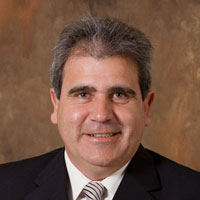 |
| Dr. Jaime Gómez García-Bermejo (male) received the MSc in Image Processing from the École Nationale Supérieure de Télécommunications of Paris (France), PhD in Engineering from the University of Valladolid (Spain). He is the member of the Direction Comitee of CARTIF, as well as Head of the Computer Vision Area. He is also Associate Professor at the University of Valladolid (Systems Engineering and Automatic Control Department). He is author and co-author of over 30 magazine articles, 100 conference papers and 5 patents on Computer Vision and Robotics (including Heritage applications). He has supervised more than 50 MSc Thesis and several PhD Thesis on the same subjects, being involved in more than 200 national and international research and applied research projects and contracts. | 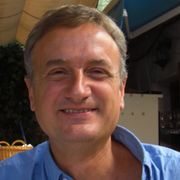 |